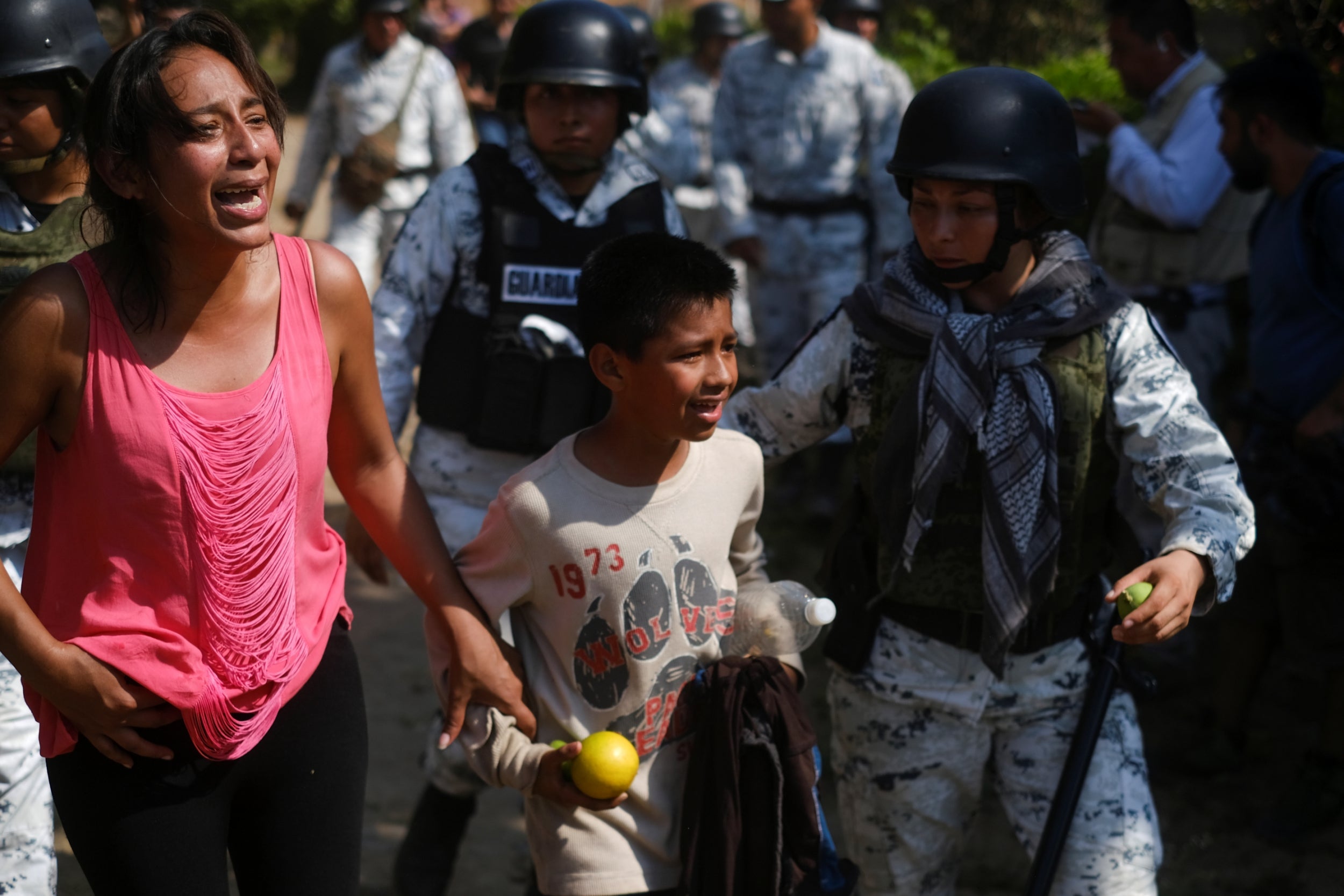Migrant caravan: Clashes on Mexico-Guatemala border as over 1,000 immigrants march to US
Violence breaks out as Mexico denies entry to US-bound migrants after pressure from Trump

Your support helps us to tell the story
From reproductive rights to climate change to Big Tech, The Independent is on the ground when the story is developing. Whether it's investigating the financials of Elon Musk's pro-Trump PAC or producing our latest documentary, 'The A Word', which shines a light on the American women fighting for reproductive rights, we know how important it is to parse out the facts from the messaging.
At such a critical moment in US history, we need reporters on the ground. Your donation allows us to keep sending journalists to speak to both sides of the story.
The Independent is trusted by Americans across the entire political spectrum. And unlike many other quality news outlets, we choose not to lock Americans out of our reporting and analysis with paywalls. We believe quality journalism should be available to everyone, paid for by those who can afford it.
Your support makes all the difference.Central American migrants, travelling in a caravan from Honduras, tried to force their way through the Mexico-Guatemala border Monday after the Mexican government rejected their request to transit toward the United States.
About a dozen people appeared to push through the gate of a bridge between the two countries, slipping through a cordon of Mexican security officials. A larger group waded across the Suchiate River that separates the two countries. Mexican National Guard troops deployed along the banks of the river tried to repel those who waded across and pursued others who reached Mexican soil.
The caravan, which formed last week in Honduras, presented a new test for the Mexican government, which promised the Trump Administration last year that it would step up enforcement, even as President Andrés Manuel López Obrador said he would respect the rights of migrants. Roughly 4,000 Central American migrants waited at the Mexico-Guatemala border on Monday morning, seeking permission to cross through Mexico to the United States, and threatening to enter by force if their request was denied.
Under pressure from President Donald Trump, Mexican efforts to enforce immigration have noticeably increased, with more checkpoints and border controls and the deployment of the national guard. But that hasn't stopped migrants from attempting to transit through the country, including in so-called caravans of hundreds or thousands travelling together for safety.
The group waiting at the border on Monday appeared to be the largest in more than a year, and its size has posed a particular challenge for Mexican security forces.
Mexico's migration agency initially suggested that the migrants could cross the border to register their claims, including the possibility of filing asylum applications. The government initial suggested that many would be given work visas in southern Mexico.
But the migration agency said Sunday that the majority would be deported to their countries of origin. So far, 1,087 of the migrants in the caravan agreed to the registration process. The rest waited at the crossing point, demanding the ability to transit through Mexico without the threat of deportation.
Leaders of the caravan wrote a letter to López Obrador, addressing the president as "Your Excellency", asking that "all the members of the caravan receive the permission to move freely through Mexican territory. We are committed to you and your government to maintain order and discipline in the places where we transit."
The government denied that request. Mexico's migration agency said only that it was "committed to maintaining a safe, orderly and regular migration."
"The legal provisions do not allow for transitory migration," the agency.
By noon Monday, many migrants decided it was time to attempt to cross the border illegally. A few pushed past a group of security personnel on the international bridge that connects Tecun Uman, Guatemala, with Ciudad Hidalgo, Mexico. Many others walked down from the bridge and crossed the river.
Video posted on social media showed men throwing rocks and bottles at uniformed security forces. Troops surround and grapple with men in T-shirts and jeans while other men and women flee.
"We only want to cross to the United States. We don't want to stay" in Mexico, one migrant identified Ingrid said in a video interview with Reuters. "Let me pass. I only want to work. I'm a single mom and I don't want to return to my country where there is nothing."
Mexico has done little to secure the physical border with Guatemala, but it has added checkpoints on the roads that connect the border to the rest of the country. Migrants are detained at those checkpoints and sent to local detention centres, where some wait for months to register with the country's migration agency. Mexico's asylum agency received 66,915 applications for asylum last year, an increase of nearly 126 percent from 2018.
But most migrants who enter Mexico either return voluntarily or are deported to their countries of origin - a marked change from recent years, when it was much easier for Central American migrants to transit through the country with the tacit permission of the Mexican government. Mexico deported more than 117,000 migrants from January through November last year. The United States deported 143,000 immigrants in the 2019 fiscal year.
For members of the caravan trying to make it to the United States, entering Mexico is just one of many challenges. Upon arrival at the U.S. border, Guatemalan asylum seekers are now typically sent back to Mexico to await their cases, a process that can take a year or more. Honduran and Salvadoran asylum seekers may also be sent back to Mexico, under the so-called Migrant Protection Protocols, or they could be sent to Guatemala to seek asylum there.
Washington Post
Join our commenting forum
Join thought-provoking conversations, follow other Independent readers and see their replies
Comments